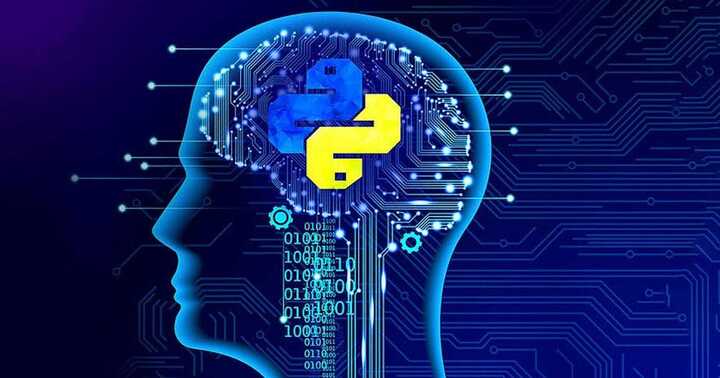In the rapidly evolving landscape of artificial intelligence (AI) and machine learning (ML), Python stands out as the premier programming language. Its versatility, robustness, and its simple features make it the go-to choice for developers. From startups to tech giants, Python is used across industries to create cutting-edge AI and ML solutions that drive innovation and transformation. Python AI development is the key for modern tech advancements, providing businesses with a versatile platform to tackle complex challenges and drive innovation. Python and machine learning integration seamlessly blend together, helping businesses to deploy sophisticated algorithms and techniques to achieve their objectives.
We build digital products to help businesses succeed!
Python for AI Solutions: Why Should You Use this Language of Choice?
Python AI development serves as the foundation for building sophisticated AI systems. Whether it’s developing natural language processing algorithms, computer vision models, or recommendation systems, Python provides the tools and frameworks necessary to bring AI projects to life. Python is the driving force behind the creation of advanced AI systems. From crafting algorithms that understand human language to designing models that perceive visual data, Python equips developers with all the necessary qualities that are needed to turn AI concepts into reality.
Python’s popularity in the AI and ML domain stems from several key factors. Firstly, its simplicity and readability allow developers to focus on problem-solving rather than wasting time with complex syntax. Furthermore, Python boasts a collection of multiple libraries and frameworks specifically tailored for AI and ML development. These libraries help in getting rid of much of the complexity associated with AI and ML tasks, enabling developers to quickly work on the ideas and solutions.

Python for AI Solutions: How It is Solving Real-World Problems?
The versatility of Python in AI and ML is reflected in its widespread adoption across various industries. When it comes to healthcare, Python is used to analyze medical imaging data, predict patient outcomes, and optimize treatment plans. In the finance sector, it powers algorithmic trading platforms, fraud detection systems, and personalized financial advice engines. In the e-commerce sector, Python AI enables product recommendation engines, demand forecasting models, and customer sentiment analysis tools.
Furthermore, Python’s role in cutting-edge technologies such as autonomous vehicles, robotics, and smart cities underscores its importance in shaping the future of AI and ML. From self-driving cars that navigate complex environments to drones that assist in disaster response missions, Python plays a pivotal role in enabling intelligent systems that enhance human capabilities and improve the quality of life.

How to Build Smarter Apps with Python and ML?
1. Clearly State Your Problem Statement
Before diving into ML, clearly define the problem you want your app to solve. Whether it’s image recognition, natural language processing, predictive analytics, or something else, a well-defined problem statement is crucial for guiding your ML efforts.
2. Collect Relevant Data
ML models rely on data to learn patterns and make predictions. Collect relevant data for your problem domain and preprocess it to ensure it’s clean, formatted correctly, and ready for analysis. Python offers libraries for data manipulation and preprocessing.
3. Choose the Right ML Algorithm
Select the ML algorithm that best suits your problem and data. Python’s scikit-learn library provides a wide range of ML algorithms and tools for model selection and evaluation.
4. Train Your ML Model
Split your data into training and testing sets, and use the training set to train your ML model. Experiment with different algorithms and hyperparameters to find the best-performing model.
5. Evaluate Model Performance
Once trained, evaluate your model’s performance on the testing set using appropriate metrics such as accuracy, precision, and many more. This step helps you assess how well your model generalizes to new data and identifies areas for improvement.
6. Integrate ML into Your App
With a trained and evaluated model in hand, integrate it into your application. Python offers various frameworks and libraries for deploying ML models in production.
7. Monitor and Iterate
After deploying your ML-powered app, monitor its performance in real-world scenarios. Collect feedback from users and monitor key metrics to identify any issues or areas for optimization.
Conclusion
Python serves as a powerful tool for AI and machine learning projects, enabling businesses to develop intelligent systems that drive innovation and deliver value. By leveraging Python’s simplicity, flexibility, and other features, businesses can unlock new opportunities, solve complex problems, and stay ahead in today’s data-driven world. With Python AI development, there are endless possibilities to build a strong online presence, all while achieving your business goals. We at Primathon offer outstanding services related to AI project development with Python. Let’s collaborate to explore innovative solutions together. Connect with us for exceptional results.
Offices
India
86P, 4th Floor, Sector 44, Gurugram, Haryana 122003Singapore
#21-02, Tower 2A, The Bayshore condo, Singapore 469974Canada
8 Hillcrest Avenue Toronto ON M2N 6Y6, CanadaUS
31 River CT, Jersey City, New JerseySubscribe to our newsletter
Our Services
Top Reads
India
86P, 4th Floor, Sector 44, Gurugram, Haryana 122003
Singapore
#21-02, Tower 2A, The Bayshore condo, Singapore 469974
Canada
8 Hillcrest Avenue Toronto ON M2N 6Y6, Canada
US
31 River CT, Jersey City, New Jersey
Contact us
info@primathon.in
+91-9205966678
Reviews


